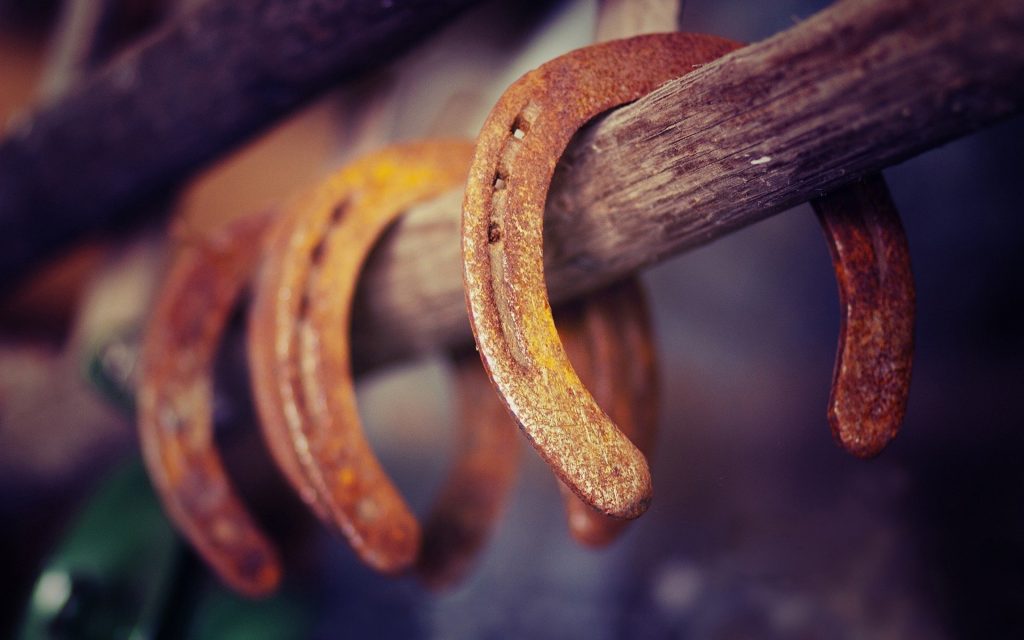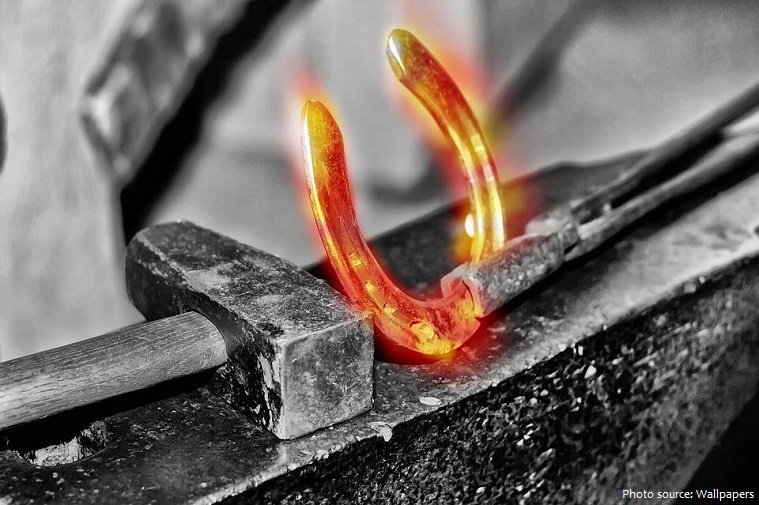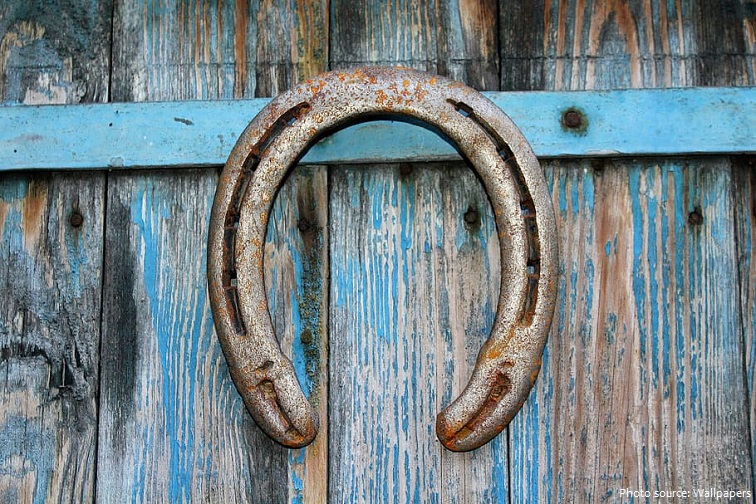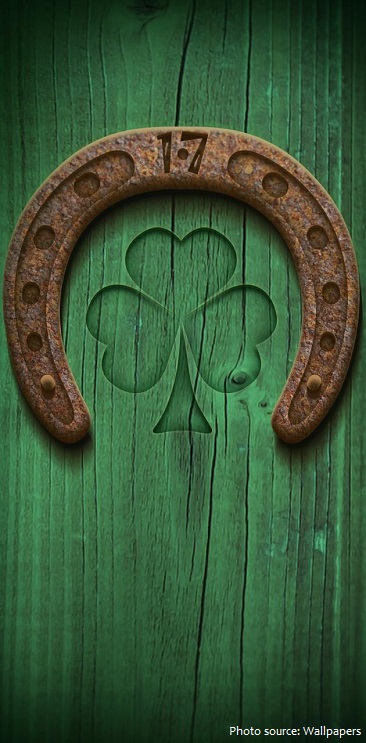
A horseshoe is a U-shaped metal plate by which horses’ hooves are protected from wear on hard or rough surfaces.
Horseshoes are available in a wide variety of materials and styles, developed for different types of horse and for the work they do. The most common materials are steel and aluminium, but specialized shoes may include use of rubber, plastic, magnesium, titanium, or copper. Steel tends to be preferred in sports in which a strong, long-wearing shoe is needed, such as polo, eventing, show jumping, and western riding events. Aluminium shoes are lighter, making them common in horse racing, where a lighter shoe is desired – and often facilitate certain types of movement, and so are favored in the discipline of dressage.

The horseshoe was first introduced many thousand years ago, possibly originating as early as 400 BC. Romans called them “Hipposandals”, and they were used to protect the feet of horses against rough terrain or extended travel. In Asia, early horseshoes were made from medicinal plants. Blacksmithing became a necessary and popular occupation, since the production of this technology allowed horses to be used for economic purposes.
It is unknown which society first nailed horseshoes into hooves, but some research regarding ancient gravesites leads archaeologists to believe that the Celts were possibly some of the first people to protect the feet of their horses with nailed-on horseshoes.
Existing references to the nailed shoe are relatively late, first known to have appeared around AD 900, but there may have been earlier uses given that some have been found in layers of dirt. There are no extant references to nailed horseshoes prior to the reign of Byzantine Emperor Leo VI, and by 973 occasional references to them can be found. The earliest clear written record of iron horseshoes is a reference to “crescent figured irons and their nails” in AD 910.

By 1000 AD, most metal shoes were made from a light bronze alloy characterized by a scalloped shape and six nail holes. These survive as archeological evidence in a variety of regions along with several changes in shape and number of nail holes.
By the time of the Crusades (1096–1270), horseshoes were widespread and frequently mentioned in various written sources. In that period, due to the value of iron, horseshoes were even accepted in lieu of coin to pay taxes.
In China, iron horseshoes became common during the Yuan dynasty (1271–1368), prior to which rattan and leather shoes were used to preserve animal hooves.
Starting in the 13th and 14th centuries, shoes were forged in large quantities and could be bought ready-made. To accommodate the larger feet of the cold-blooded draft horses used in trade, travel and war, shoes became wider and longer.
It was not until the dawn of the Industrial Revolution that horseshoe production reached its peak. The 1800s saw the emergence of machines capable of mass-producing horseshoes that gave a huge advantage in warfare. And by 1835, a horseshoe manufacturing machine was patented for the first time in the United States. The machine was capable of producing 60 shoes per hour.
During the American Civil War, horseshoe production turned out to be a significant advantage for the Northern armies’ victory as they acquired a horseshoe-producing machine. Horses properly equipped with protective gear preformed better in the battlefield compared to horses without shoes. This led to the defeat of the Southern forces in the 1860s.
A horseshoe is considered very lucky and used to be hung in homes to protect it and attract good fortune for the family residing inside. Although the origins are not exactly known, it is believed that the horseshoe became the symbol of luck when the eighth century Chaldeans thought its crescent shape represented various moon goddesses thus protecting against the curse of the evil eye. Others believe that horseshoes became synonymous with luck in 969 AD when St. Dunstan, the patron saint of blacksmiths in the Catholic Church, tricked the devil.

Horseshoe pitching is a game for two or four players, most popular in the United States and Canada, in which players attempt to throw horseshoes so as to encircle a stake or to get them as close to the stake as possible. It may have derived from the game of quoits played by Roman officers during the Roman occupation of Britain (1st to 5th century).
The largest horseshoe is 2.36 m (7 ft 8.91 in) wide and 2.47 m (8 ft 1.24) high, achieved by Abhishek Mazumder (India) in Mumbai, India, on 20 November 2016.
The largest horseshoe collection consists of 13,855 horseshoes, achieved by Petru Costin (Moldova), in Chisinau, Moldova, on 4 July 2021. Petru Costin previously held the record in 2011 with over 3,000 horseshoes, and he’s now surpassed his record by over 10,000 more horseshoes.
The farthest horseshoe throw is 53.34 m (175 ft), and was achieved by Dariusz Slowik (Canada), in Aarhus, Denmark, on 18 November 2020.
